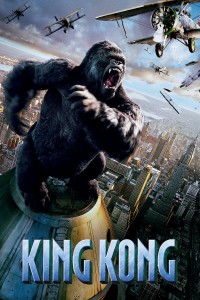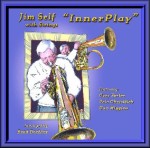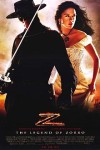You would be hard pressed to find many musicians on ANY instrument as versatile and talented as tubist Jim Self. From top Hollywood studio dates, to playing principal tuba in The Hollywood Bowl Orchestra, playing the John Williams Tuba Concerto under the composer’s baton to being nominated by DOWNBEAT, Jim Self is remarkable and unique. His endeavors stretch to more than a dozen solo recordings and numerous compositions as well. What would you expect from the protege of Harvey Phillips and Tommy Johnson? “The Fourth Valve” tm is honored to host Jim Self for our Fourth interview of our first set of four interviews!
1. Do you remember how you felt on your first motion picture soundtrack session?
My first session was a TV show–2 weeks after I moved to LA (don’t remember name of show)–subbing for Tommy Johnson. I had a tuba solo and the 1st horn (Dave Duke), came up to me and said, “Hey kid, you are going to have a good career in the studios”.–Wow! I don’t remember my 1st movie but my 1st BIG movie was Taxi Driver with two tubas (Tommy and me) for the great composer Bernard Herrmann. We finished on Christmas eve 1975 and Herrmann went home and died that night.
Can you compare that to how you felt on your most recent one?
The last film I did was in May. It was X Men 3, Days of Future Past with composer John Ottman. It had a huge brass section with Doug Tornquist and I on tubas and cimbassos.
After more than 1500 movies I don’t get too excited anymore. The composer in this score, like so many in this age of Pro Tools, wanted a lot of the cues recorded with striping (tracking)–recording the strings and woodwinds then overdubbing the brass–so they can mix it separately. I really hate this kind of recording and much prefer it when we all play together on the same take. Alas it is the way things are done today–especially in big, loud action movies like X Men.
2. How do you conceive of, describe, or imagine the ideal tuba sound?
My ideal sound is clear, big and warm and projects a lot of feeling, in tune, even timbre in all registers and a solo flare when needed. Great rhythm is a must!
3. What was your warm-up like when you were 22 as opposed to now?
now?
I never had a consistent warm-up routine. Most of my life I worked every day and was usually in shape even with out a warm-up. Often my work required making a “take” immediately with out rehearsal-so I learned to be my best “in the moment”. But I still recommend a warm-up to my students that includes long tones, tonguing and slurring, range from low to high-all to get everything working. I play less now so I need to practice more.
4. What are your inspirations?
My inspirations are so many from my teachers Harvey Phillips and Tommy Johnson to Art Farmer, Stan Getz, Placido Domingo, Frank Sinatra, Mel Torme,Arnold Jacobs, Roger Bobo, Winston Morris, John Stevens, Tony Plog and many many other composers and arrangers.
5. How would you describe the relationship between the tuba and the bass trombone?
About as close a a marriage–both musically and personally (hopefully without the sex). Rhythm, pitch, style and balance HAS to be shared. My job is to make the musician next to me sound better by listening and sharing–not leading.
6. What is the best tuba playing you’ve ever done?
Impossible to say–there have been so many from James Horner and John Williams solos in movies, i.e (Close Enbcounters “Voice of the Mothership) to the Wagner Ring Cycle. But my 12 jazz and classical CDs are collectively the best representatives of my sound, passion and art.
Ever heard?
Certainly Harvey Phillips, Tommy Johnson, Roger Bobo, John Fletcher, Dan Perantoni, Chester Schmitz, Arnold Jacobs, Sergio Carolino–and many many more.

7. How is playing a movie soundtrack session in Hollywood different than other types of sessions, or sessions in another location?
“A gig is a gig” — you always have to play well but a studio session requires more perfection because a microphone is right over the bell and every error is noticeable. One bad performance can mean the end to working for that composer or contractor–or even the end of your studio career. Studio work often require solo or brass overdubs–where you have to be perfect. Extra “takes” cost money and too many will cost you a career. These things are true in all recording jobs: movie, TV, records, jingles. Movies are the best paying gigs and often have the best musicians, so there is a pressure for perfection knowing that billions will hear your music–forever!
8. What do you think the high points have been for the tuba in jazz? What direction would you like to see?
The tuba in jazz is still relatively new. Red Callender, Howard Johnson, and many dixieland players have been the pioneers. I hope I have added to the idiom with my concerts and recordings as have Marty Erickson, Janos Mazura and several younger players. The GREAT star jazz tuba player on the level of Art Farmer, Stan Getz, JJ Johnson, Bill Evans (and on and on), is still in the future–maybe a teenager is out there now. The euphonium, of course, reached it with Rich Matteson-but even Rich struggled to get the recognition that the great artists on other instruments received.
9. What was it like playing for Don Ellis?
Don Ellis was like “put on your seat belt and hold on tight”. Fast, complex arrangements all in odd meters was a real trip. It sure made me a better reader and comfortable with odd and shifting meters. The tuba parts were either doubling the bass or ridiculous complicated solo and ensemble lines. My greatest joy was just listening to the great rhythm sections turning the time around in a myriad of ways and always coming out on one. Don’s writing style is a BIG part of the way I compose myself.
Jim Self-Los Angeles-June 3, 2014
Some Solo Recordings of Jim Self*
I. Children at Play (Discovery-Trend), l983-Jazz tuba and harmonica. (Chosen by High Fidelity magazine as one of the top ten jazz albums of 1983.) Re-released on Bassett Hound Records for digital sales only.

II. New Stuff (Discovery-Trend), l988-Jazz Fusion. Re-released on Bassett Hound Records for digital sales only.
III. Tricky Lix (Concord Jazz), 1990-Jazz featuring Gary Foster and Warren Luening.
IV. Changing Colors (Summit), 1992-Classical
V. The Basset Hound Blues (d’Note Records), 1997-A jazz C.D. with Pete Christlieb on tenor sax.
VI. The Big Stretch (Basset Hound Records), 1999-A classical recording which features some Self compositions.
which features some Self compositions.
VII. My America(Basset Hound Records)-Folk Music
VIII. Size Matters-Jazz Standards featuring Bill Scarlett on tenor sax.
 IX. Inner Play (Basset Hound Records),2006-Jazz and strings featuring Gary Foster, Pete Christlieb and Dan Higgins. (Chosen by Jazz Times magazine as one of the top 50 jazz albums of 2006.)
IX. Inner Play (Basset Hound Records),2006-Jazz and strings featuring Gary Foster, Pete Christlieb and Dan Higgins. (Chosen by Jazz Times magazine as one of the top 50 jazz albums of 2006.)
X. The Odd Couple(Basset Hound Records)-Jazz CD featuring Ron Kalina on harmonica.
XI. Concerto for Tuba and Orchestra, Bill Cunliffe(Metre Records).
XII. ‘Tis the Season TUBA Jolly-12 piece tuba ensemble.
c. 2014 David William Brubeck All Rights Reserved davidbrubeck.com
* List derived from bassetthoundmusic.com, where many of Mr. Self’s recordings and publications are made available in addition to being available on iTunes, CDBaby and Amazon.com!
Interested in more “The Fourth Valve” tm Interviews?
Don Harry
John Stevens
Jim Self
John Van Houten
Demondrae Thurman
Deanna Swoboda
R. Winston Morris
Beth Wiese
Aaron Tindall
Marty Erickson
Beth Mitchell
Chitate Kagawa
Aaron McCalla

